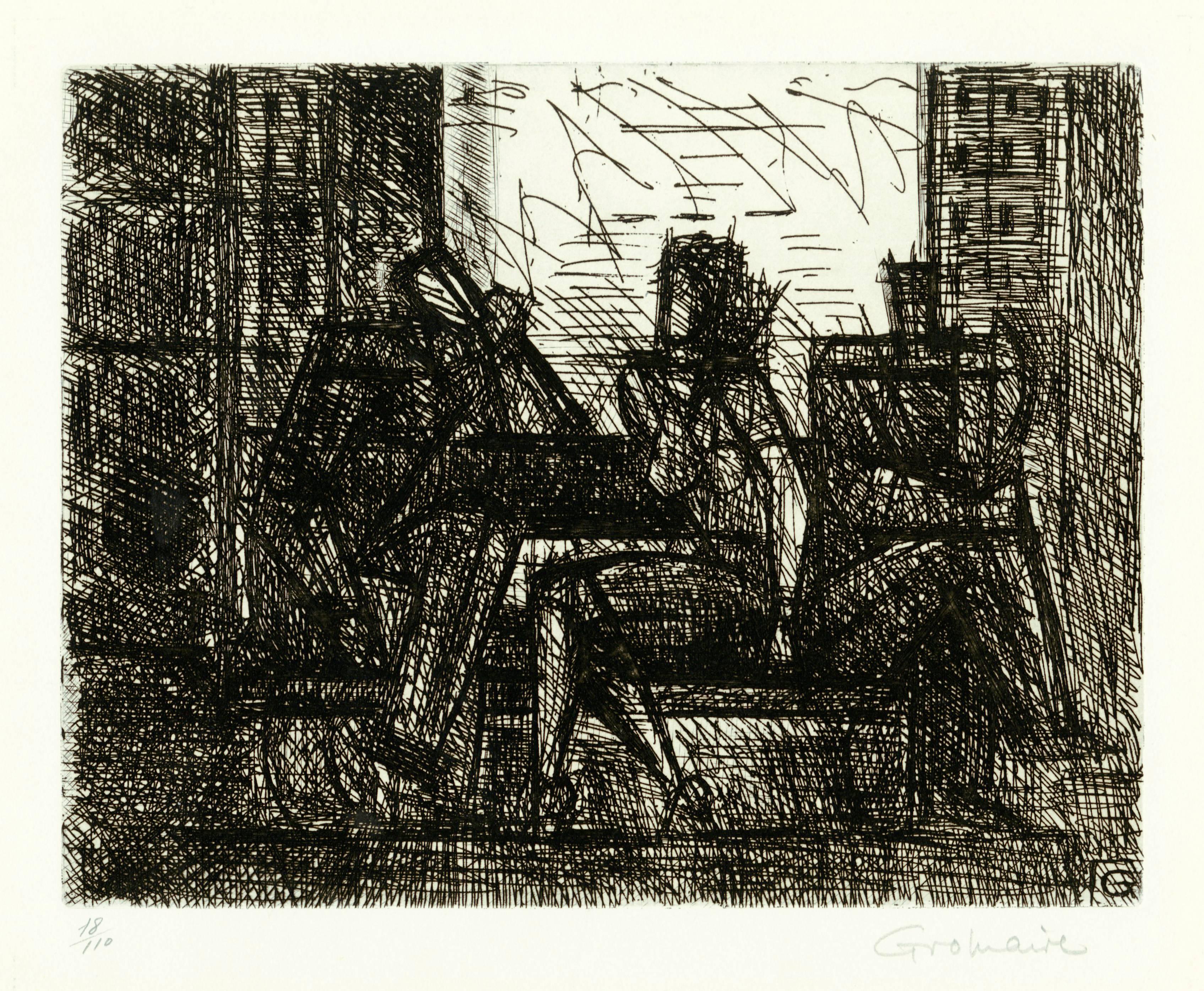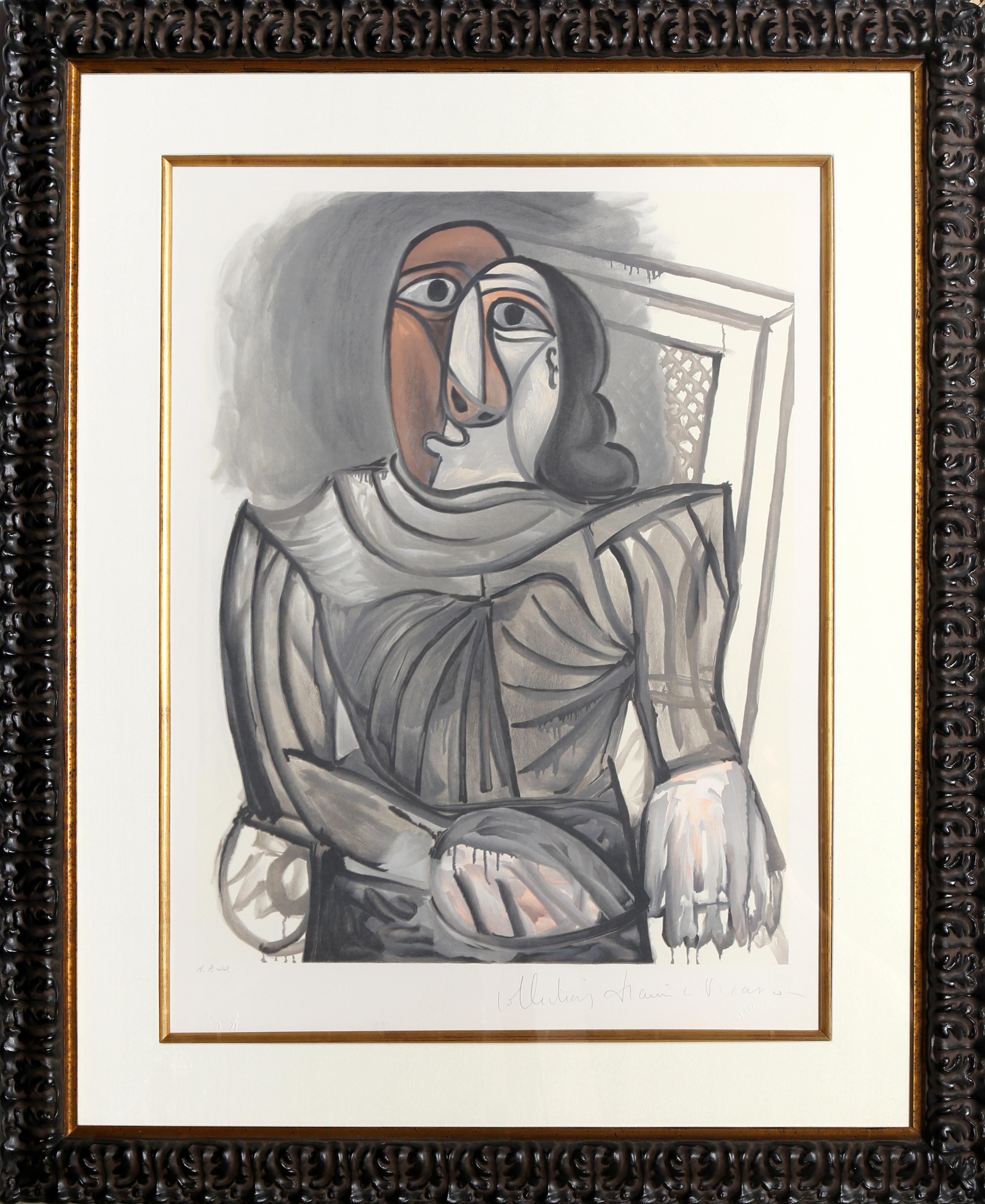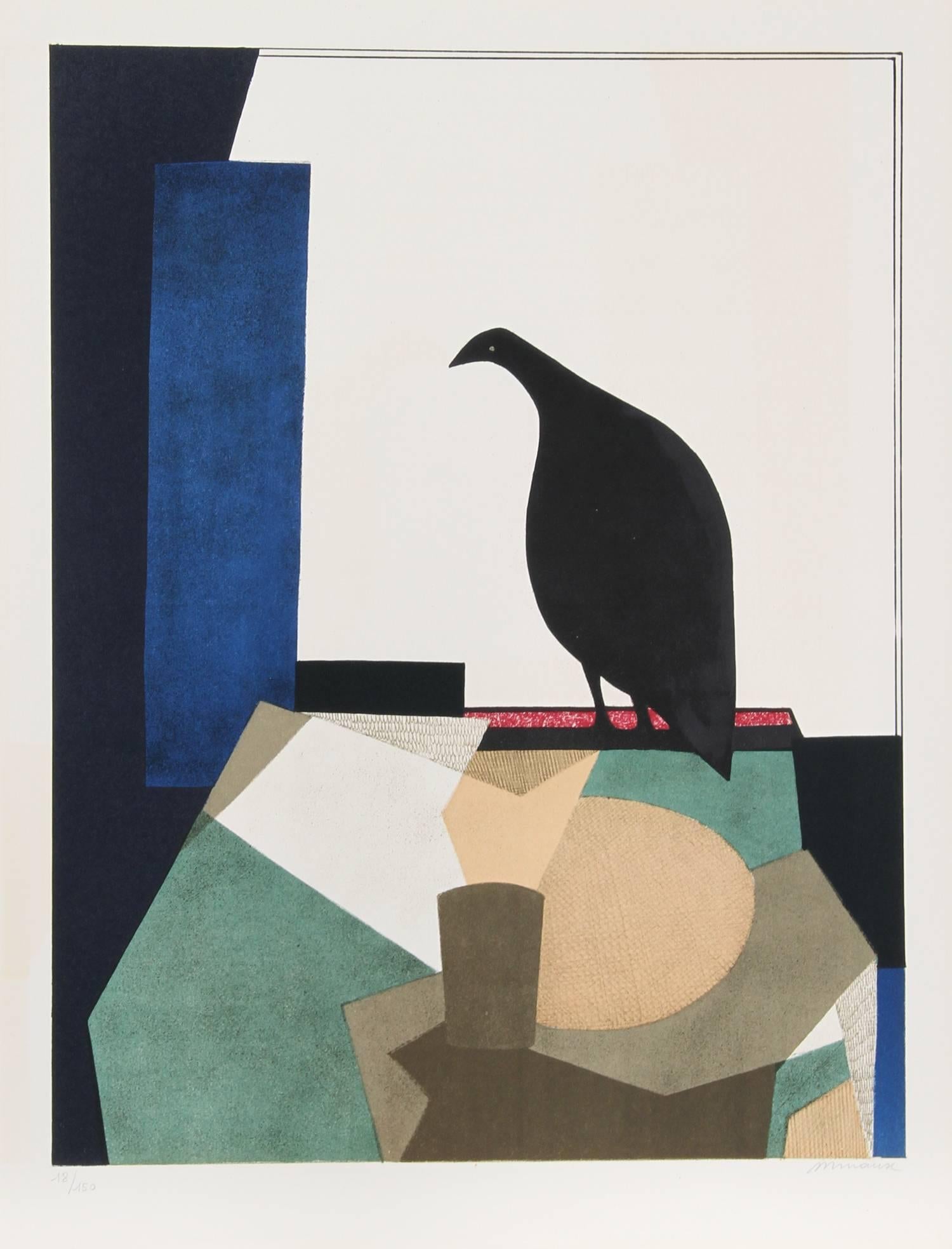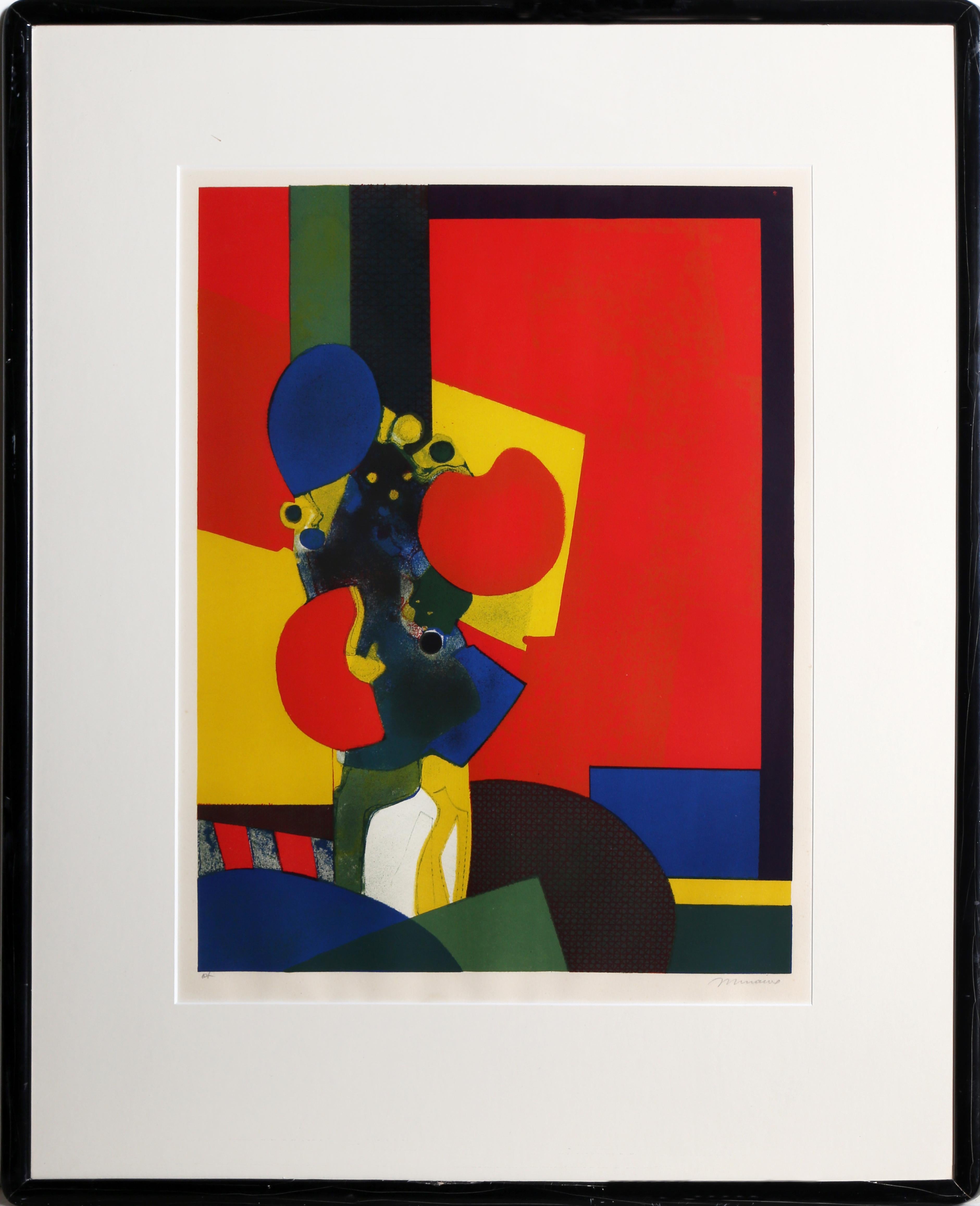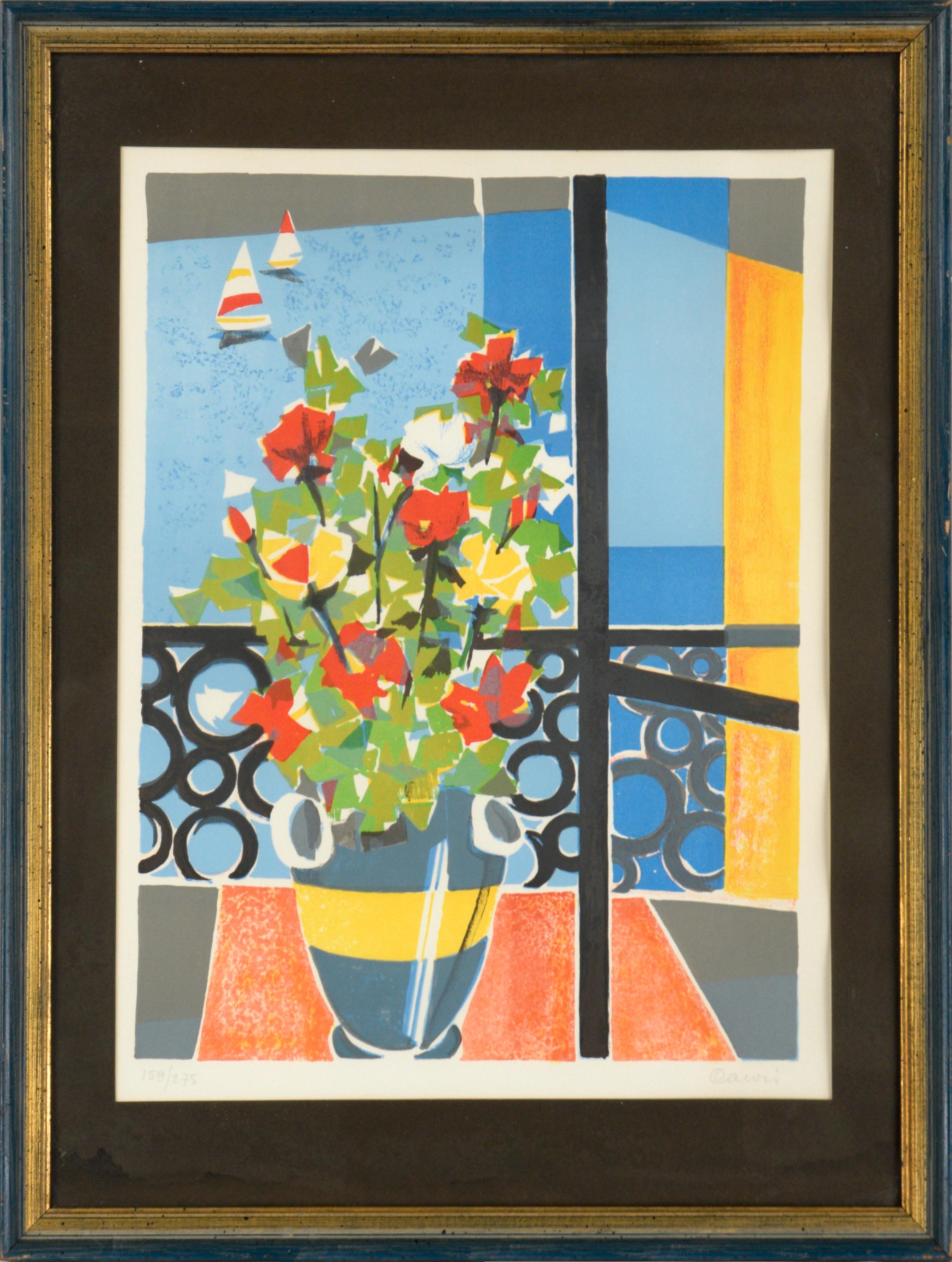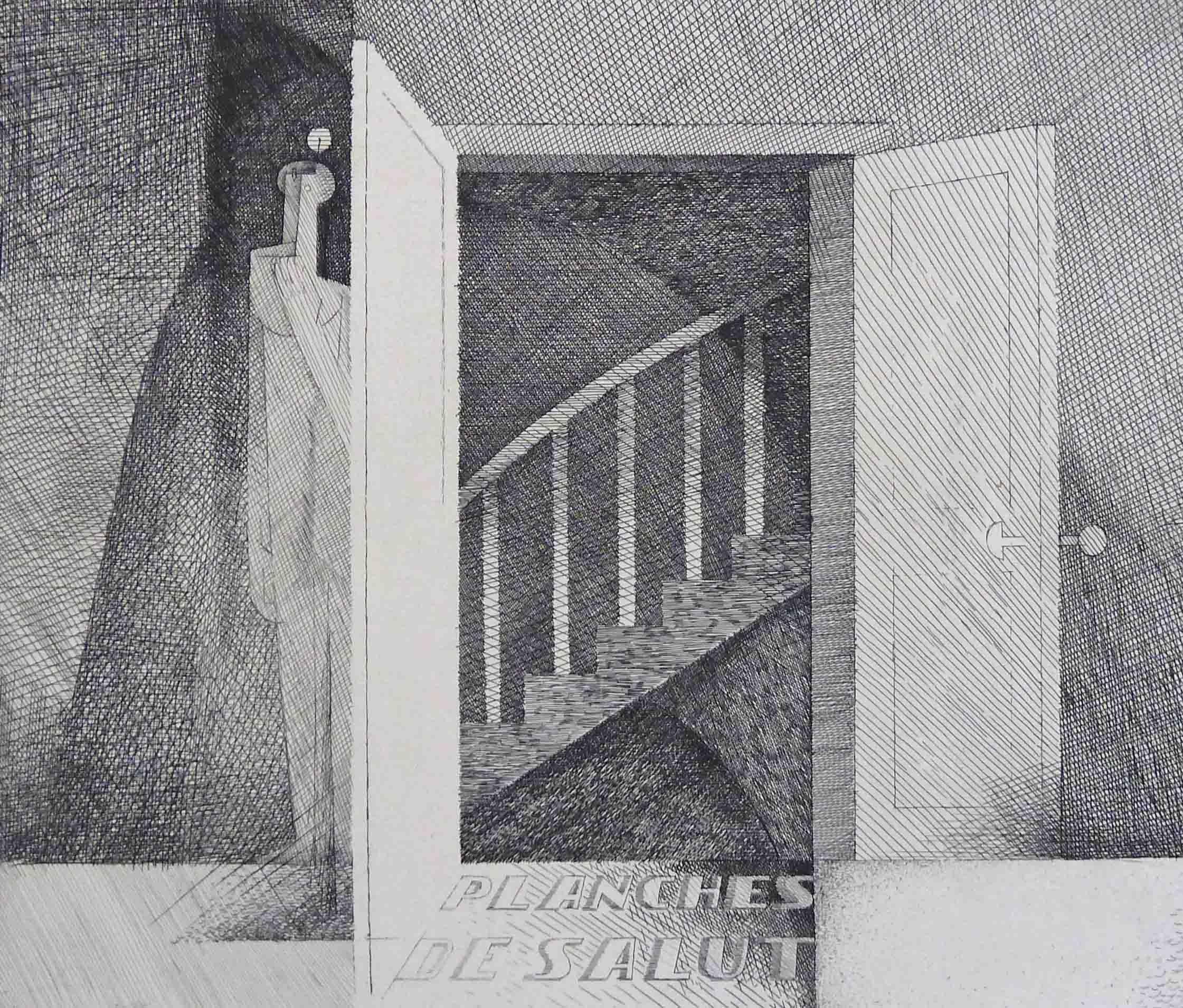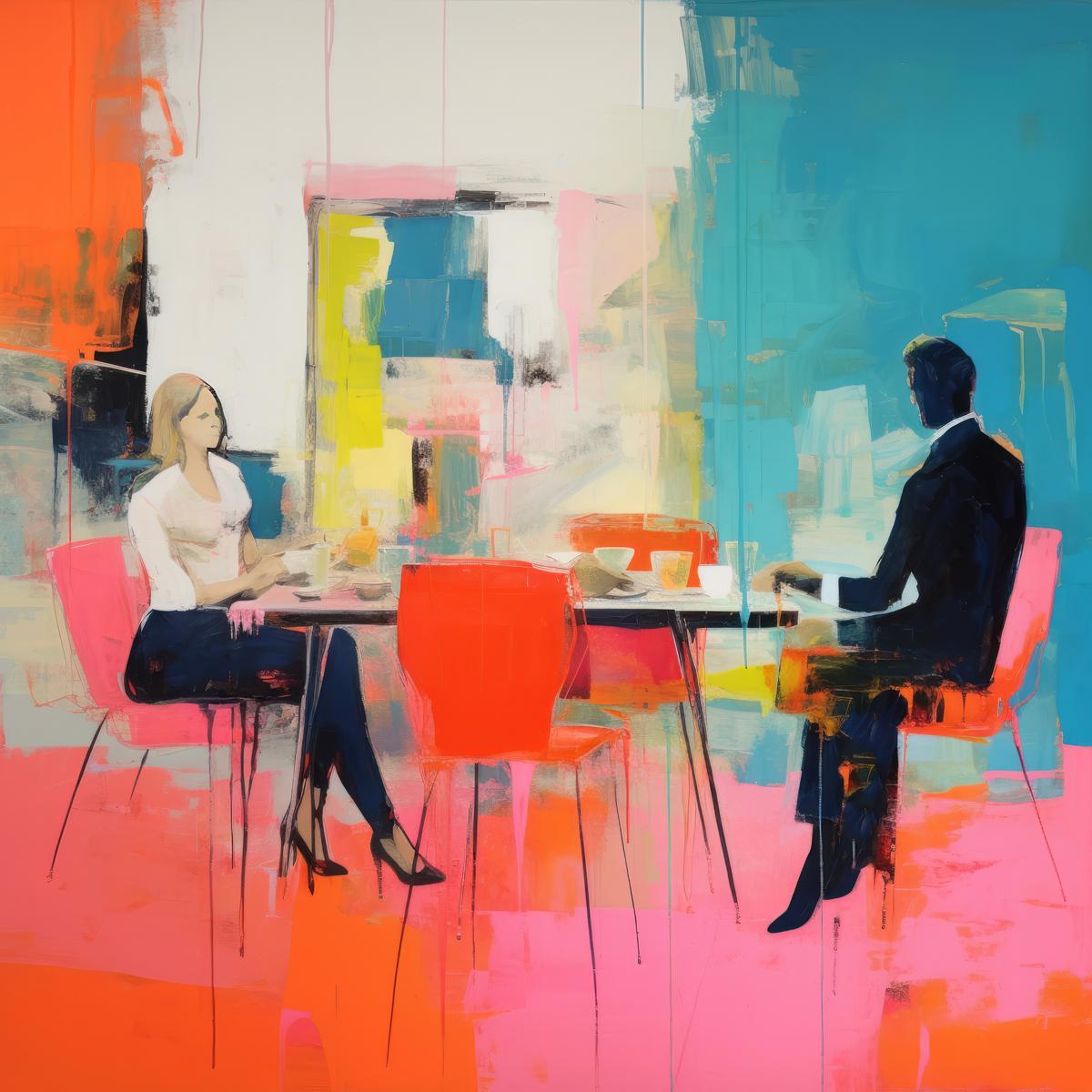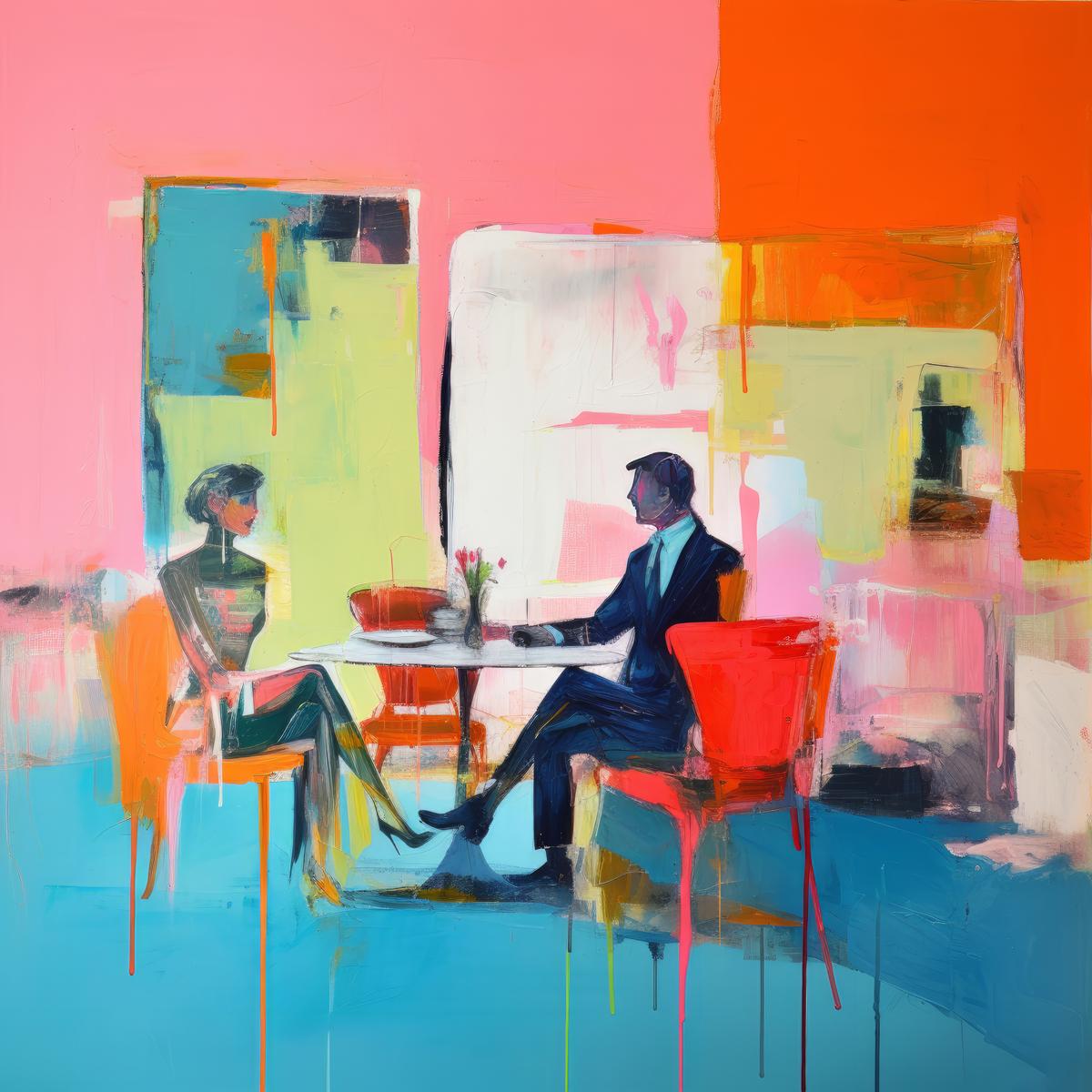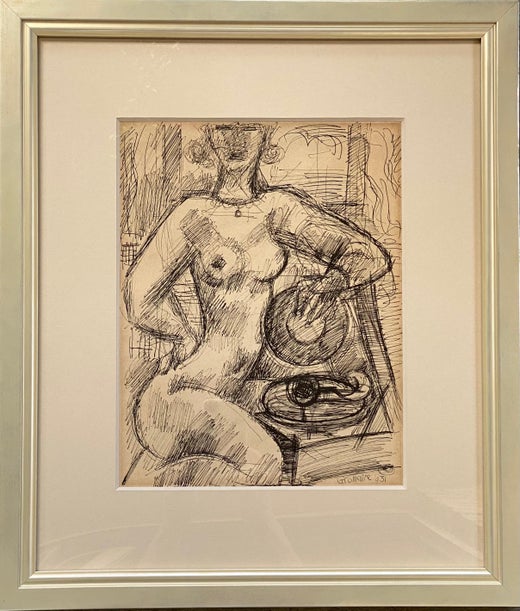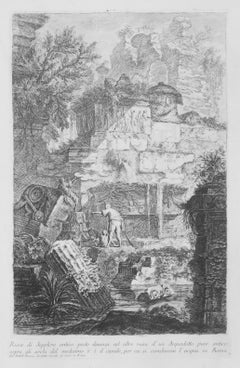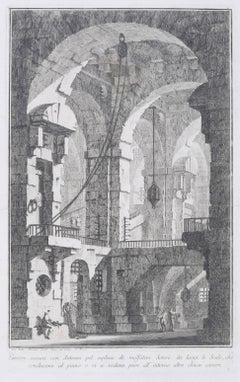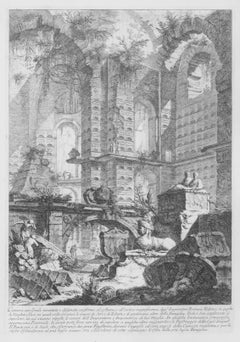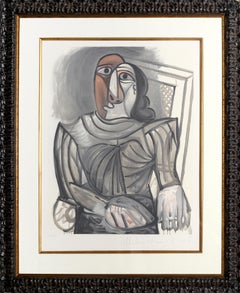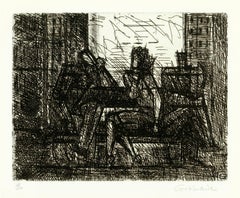
The Art of Conversation (Three characters on...)
View Similar Items
Want more images or videos?
Request additional images or videos from the seller
1 of 7
Marcel GromaireThe Art of Conversation (Three characters on...)1958
1958
$700List Price
About the Item
- Creator:Marcel Gromaire (1892 - 1971, French)
- Creation Year:1958
- Dimensions:Height: 7.82 in (19.87 cm)Width: 10.19 in (25.89 cm)
- Medium:
- Movement & Style:
- Period:
- Condition:
- Gallery Location:Fairlawn, OH
- Reference Number:Seller: FA101481stDibs: LU14012448792
Marcel Gromaire
Marcel Gromaire (1892-1971) was a prominent French painter known for his powerful and distinctive style, characterized by robust forms, bold colors, and a sense of social realism. Born in Noyelles-sur-Sambre, France, Gromaire studied at the École des Beaux-Arts in Paris. His early works were influenced by Cubism and Fauvism, but he later developed a unique approach that emphasized monumental figures and scenes depicting the struggles of everyday life, particularly of the working class. Gromaire's paintings often conveyed a sense of social commentary and empathy, portraying themes of labor, war, and human resilience. His use of strong outlines and simplified forms gave his compositions a dramatic and expressive quality. Gromaire's art gained recognition in the interwar period, and he continued to produce significant works throughout his career. His paintings are held in major museums and collections internationally, reflecting his enduring impact on the development of modern art in France. Marcel Gromaire passed away in Paris in 1971, leaving behind a legacy of powerful and socially engaged artwork.
About the Seller
5.0
Recognized Seller
These prestigious sellers are industry leaders and represent the highest echelon for item quality and design.
Gold Seller
Premium sellers maintaining a 4.3+ rating and 24-hour response times
Established in 1978
1stDibs seller since 2013
794 sales on 1stDibs
Typical response time: 1 hour
Associations
International Fine Print Dealers Association
Authenticity Guarantee
In the unlikely event there’s an issue with an item’s authenticity, contact us within 1 year for a full refund. DetailsMoney-Back Guarantee
If your item is not as described, is damaged in transit, or does not arrive, contact us within 7 days for a full refund. Details24-Hour Cancellation
You have a 24-hour grace period in which to reconsider your purchase, with no questions asked.Vetted Professional Sellers
Our world-class sellers must adhere to strict standards for service and quality, maintaining the integrity of our listings.Price-Match Guarantee
If you find that a seller listed the same item for a lower price elsewhere, we’ll match it.Trusted Global Delivery
Our best-in-class carrier network provides specialized shipping options worldwide, including custom delivery.More From This Seller
View AllThe Art of Conversation (Three characters on...)
By Marcel Gromaire
Located in Fairlawn, OH
The Art of Conversation (Three characters on...)
Etching, 1958
Signed in pencil lower right: “Gromaire” (see photo)
Edition: 110 (18/110) see photo
Printed on RIVES paper
Publisher: ...
Category
1950s Cubist Interior Prints
Materials
Etching
Ruine di Sepolcro antico
By Giovanni Battista Piranesi
Located in Fairlawn, OH
Ruine di Sepolcro antico
Etching, 1743
Signed in the plate bottomleft in the caaption plate
From: Prima Parte, 1743
Second edition: 1750-1778
Watermark: R 37-39
A lifetime impression printed during Piranesi’s life, before the plates are moved to Paris by his sons in the 1790’s
Coniditon: Excellent/Very good
Image size: 14 5/8 x 9 3/4 inches
Reference: Robison 17 iii/V
Piranesi In Rome: Prima Parte di Architetture e Prospettive
"Although Piranesi studied architecture in Venice, he never was able to find work in the field other than a few jobs involving remodeling in Rome. While Piranesi was struggling to support his architectural endeavors upon his arrival in Rome in 1740, he spent a short period of time in the studio of master painter Giovanni Battista Tiepolo (1696-1770) in addition to his apprenticeship with Giuseppe Vasi. The first production of Piranesi’s early years in Rome and a culmination of his training under Vasi, Tiepolo, and his uncle, was the Prima Parte di Architetture e Prospettive (1743). The Prima Parte was a collection of twelve etchings of imaginary temples, palaces, ruins, and a prison. During this time, Piranesi was still developing the unique style of etching he is known for today, and as such the Prima Parte differs significantly in technique compared to later works. In the Frontispiece of the Prima Parte, Piranesi’s lines are definite and exact with very little flow to them, designed in the form of traditional etching. The detail is immaculate, and yet perspective of the piece is oddly simple and familiar to the viewer. Piranesi’s technique employs miniscule markings and lines, intricately woven together to create a stippling effect. The Prima Parte, described as “rigid” by art historian Jonathan Scott, came to be seen as a stark contrast to his later sketches, which were much lighter and freer. Influenced by the style of Tiepolo, which epitomized the lightness and brightness of the Rococo period, Piranesi adopted some of the more painterly techniques of the masters he apprenticed under. Piranesi made the medium of etching appear as though it was a sketch or a painting, hence a “freer” and more fluid design in his later works. For example, the frontispiece of the Prima Parte read as an etching to Piranesi’s audience, but in his later vedute, the style of etching almost appears to be made of brushstrokes. Moreover, at the same time Piranesi was working on the Prima Parte, he aided the artist Giambattista Nolli. There is a small section of Nolli’s map...
Category
1740s Old Masters Interior Prints
Materials
Etching
Carcere ascura
By Giovanni Battista Piranesi
Located in Fairlawn, OH
Carcere ascura
Etching, 1743
Signed in the plate bottom left corner
From: Prima Parte, 1743
Second edition: 1750-1778
Watermark: R 37-39
A lifetime impression printed during Piranesi’s life, before the plates are moved to Paris by his sons in the 1790’s
This image foretells Piranesi's famous set, Carceri (Prisons) which is his next creative effort.
Condition: Horizontal crease midway in the sheet associated with the manufacture of the paper.
Visible watermark verso
Small printer crease in the bottom right below the caption plate.
Image size: 14 1/2 x 9 1/2 inches
Reference: Robison 3 iii/VI
Piranesi In Rome: Prima Parte di Architetture e Prospettive
"Although Piranesi studied architecture in Venice, he never was able to find work in the field other than a few jobs involving remodeling in Rome. While Piranesi was struggling to support his architectural endeavors upon his arrival in Rome in 1740, he spent a short period of time in the studio of master painter Giovanni Battista Tiepolo (1696-1770) in addition to his apprenticeship with Giuseppe Vasi. The first production of Piranesi’s early years in Rome and a culmination of his training under Vasi, Tiepolo, and his uncle, was the Prima Parte di Architetture e Prospettive (1743). The Prima Parte was a collection of twelve etchings of imaginary temples, palaces, ruins, and a prison. During this time, Piranesi was still developing the unique style of etching he is known for today, and as such the Prima Parte differs significantly in technique compared to later works. In the Frontispiece of the Prima Parte, Piranesi’s lines are definite and exact with very little flow to them, designed in the form of traditional etching. The detail is immaculate, and yet perspective of the piece is oddly simple and familiar to the viewer. Piranesi’s technique employs miniscule markings and lines, intricately woven together to create a stippling effect. The Prima Parte, described as “rigid” by art historian Jonathan Scott, came to be seen as a stark contrast to his later sketches, which were much lighter and freer. Influenced by the style of Tiepolo, which epitomized the lightness and brightness of the Rococo period, Piranesi adopted some of the more painterly techniques of the masters he apprenticed under. Piranesi made the medium of etching appear as though it was a sketch or a painting, hence a “freer” and more fluid design in his later works. For example, the frontispiece of the Prima Parte read as an etching to Piranesi’s audience, but in his later vedute, the style of etching almost appears to be made of brushstrokes. Moreover, at the same time Piranesi was working on the Prima Parte, he aided the artist Giambattista Nolli. There is a small section of Nolli’s map...
Category
1740s Old Masters Interior Prints
Materials
Etching
Camera sepolcrale
By Giovanni Battista Piranesi
Located in Fairlawn, OH
Camera sepolcrale
Etching 1743
Signed in the bottom left corner
From: Prima Parte, 1743
Second edition: 1750-1778
Watermark: R 37-39
A lifetime impression printed during Piranesi’s life, before the plates are moved to Paris by his sons in the 1790’s
Condition: Excellent
Image size: 14 5/8 x 9 3/4 inches
Reference: Robison 20 iii/V
Piranesi In Rome: Prima Parte di Architetture e Prospettive
"Although Piranesi studied architecture in Venice, he never was able to find work in the field other than a few jobs involving remodeling in Rome. While Piranesi was struggling to support his architectural endeavors upon his arrival in Rome in 1740, he spent a short period of time in the studio of master painter Giovanni Battista Tiepolo (1696-1770) in addition to his apprenticeship with Giuseppe Vasi. The first production of Piranesi’s early years in Rome and a culmination of his training under Vasi, Tiepolo, and his uncle, was the Prima Parte di Architetture e Prospettive (1743). The Prima Parte was a collection of twelve etchings of imaginary temples, palaces, ruins, and a prison. During this time, Piranesi was still developing the unique style of etching he is known for today, and as such the Prima Parte differs significantly in technique compared to later works. In the Frontispiece of the Prima Parte, Piranesi’s lines are definite and exact with very little flow to them, designed in the form of traditional etching. The detail is immaculate, and yet perspective of the piece is oddly simple and familiar to the viewer. Piranesi’s technique employs miniscule markings and lines, intricately woven together to create a stippling effect. The Prima Parte, described as “rigid” by art historian Jonathan Scott, came to be seen as a stark contrast to his later sketches, which were much lighter and freer. Influenced by the style of Tiepolo, which epitomized the lightness and brightness of the Rococo period, Piranesi adopted some of the more painterly techniques of the masters he apprenticed under. Piranesi made the medium of etching appear as though it was a sketch or a painting, hence a “freer” and more fluid design in his later works. For example, the frontispiece of the Prima Parte read as an etching to Piranesi’s audience, but in his later vedute, the style of etching almost appears to be made of brushstrokes. Moreover, at the same time Piranesi was working on the Prima Parte, he aided the artist Giambattista Nolli. There is a small section of Nolli’s map...
Category
1740s Old Masters Interior Prints
Materials
Etching
La Lampe Polonoise
By Jean Baptist Le Prince
Located in Fairlawn, OH
La Lampe Polonoise
Aquatint, 1771
Signed and dated in the plate lower left
Condition: Yellowing to the sheet
Image size: 6 1/8 x 8 1/8 inches
Reference: Hedou 147 ii/II
Provenance: C...
Category
1770s Old Masters Interior Prints
Materials
Aquatint
The Woman and the Street
By Marc Chagall
Located in Fairlawn, OH
The Woman and the Street
Etching, 1927-1930
Signed in the plate lower right corner (see photo)
From: The Fables of La Fontaine, Plate 84
From the deluxe portfolio edition of 40 examp...
Category
1920s French School Prints and Multiples
Materials
Etching
You May Also Like
Young Girl in Dressing Room - Original Handsigned Lithograph - 140ex
By Andre Minaux
Located in Paris, IDF
Andre MINAUX
Young Girl in Dressing Room
Original stone lithograph
Handsigned in pencil
Numbered / 140 ex
On vellum 60 x 50 cm (c. 24 x 20 inch)
Bears blind stamp of the editor (Pe...
Category
Mid-20th Century Cubist Interior Prints
Materials
Etching, Aquatint
Bar en Pennsylvania, 1914
By Jean-Emile Laboureur
Located in New York, NY
Jean-Emile Laboureur (1877-1943), Bar en Pennsylvanie, etching, 1914. Signed in pencil lower left and numbered 21/35 lower right [also signed and dated lower in the plate lower left]...
Category
1910s Cubist Interior Prints
Materials
Etching
At the Cafe : Sharing a Drink - Original Etching
By Marcel Gromaire
Located in Paris, IDF
Marcel GROMAIRE (1892-1971)
At the Cafe : Sharing a Drink
Original etching
Printed signature in the plate
On vellum, 28.5 x 38 cm (c. 11 x 15 in)
INFORMATION: This etching is authe...
Category
Late 20th Century Cubist Interior Prints
Materials
Etching
Femme Assise a la Robe Grise, Cubist Lithograph after Pablo Picasso
By Pablo Picasso
Located in Long Island City, NY
A lithograph from the Marina Picasso Estate Collection after the Pablo Picasso painting "Femme Assise a la Robe Grise". The original painting was completed in 1943. In the 1970's af...
Category
1980s Cubist Figurative Prints
Materials
Lithograph
"Amour from the Helene Portfolio" Lithograph by Andre Minaux
By Andre Minaux
Located in Long Island City, NY
Artist: Andre Minaux, French (1923 - 1986)
Title: Amour from the Helene Portfolio
Year: 1974
Medium: Lithograph, signed and numbered in pencil
Edition: 150, XXX
Size: 25.75 in. x 19....
Category
1970s Cubist Animal Prints
Materials
Lithograph
Still Life with Flowers, Framed Cubist Lithograph by Andre Minaux
By Andre Minaux
Located in Long Island City, NY
Andre Minaux, French (1923–1986)
Date: circa 1975
Lithograph, signed and numbered in pencil
Edition of EA
Image Size: 22.5 x 16.5 inches
Frame Size: 34 x 27 in...
Category
1970s Cubist Still-life Prints
Materials
Lithograph
